It is evident that Mark Kehoe knows Claas forage harvesters inside out. Mark is part of a team that services from up to 80 forage harvesters per year. He outlined the six main areas of the machine that should be assessed for a mid-season check-up.
For this article, we used a 2007 Claas Jaguar 870, as this would be typical of a large farmer or a contractor’s machine.

Pick-up reel: maintenance is vital to ensure grass is cleanly picked off the ground and there is a smooth flow of grass into the feed roller.
1 Pick-up
As the pickup reel is the decider on how well the machine will clean the ground, accompanied by the fact we are seeking an optimum crop flow into the feed rollers, it is vital to have it in tip-top condition. After the past few weeks, many contractors have spoken of the rougher-than-normal ground conditions which are as a result of the wet weather of the spring gone by.
As a result, blades on mowers and in particular tines on the pickup reel will have suffered most. Contractors should replace any broken, damaged or absent tines and tighten up the remaining tines. Any missing tines will add unnecessary stress on neighbouring tines, causing further breakages. Any missing or damaged tine bands should also be replaced.
Mark informed us that the chain on the pickup should be inspected and tightened if necessary. Any grease points not connected to the auto greaser should receive attention. The cam track on the drive side of the pickup reel should be inspected for any wear. The cam bearing should be changed at least once per season. The bearings on the support wheels on the pickup reel should be inspected by giving them a simple wiggle. If any play in these bearings is noted, they should be replaced.
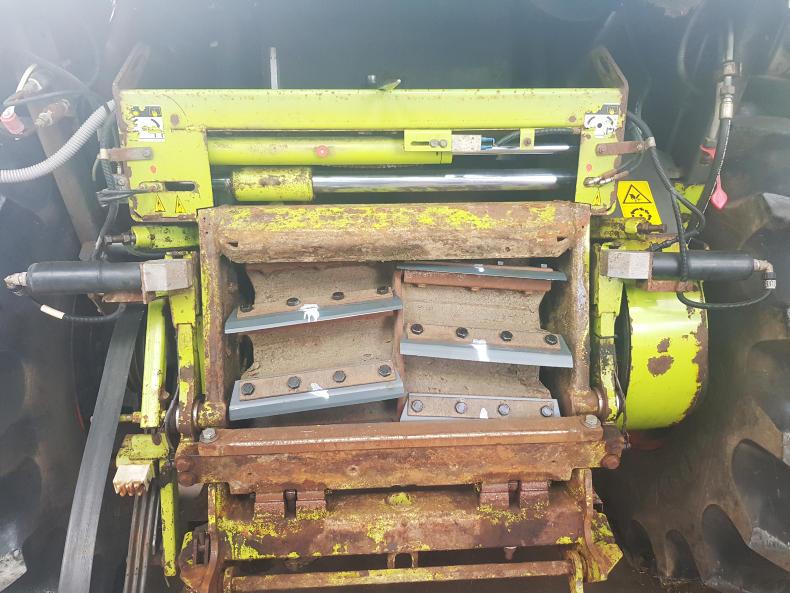
Knives and shear bar: must be kept sharp to ensure smooth operation of machine and minimise fuel usage.
2 Knives and shear bar
To ensure the harvester is running and chopping smoothly, it is essential that the knives and shear bar are in good condition.
“Some busy machines around the country are after chopping 1,000 to 1,500 acres of first-cut silage and may need knives to be repositioned and quite possibly sharpened, especially if they have come into contact with stones, etc,” Mark said.
The sharpener stone should be inspected and replaced if worn. If this stone is excessively worn, it will not come into sufficient contact with the knives to sharpen them.
To ensure a smooth flow of grass through the machine, it is essential that knives are kept sharp. The gap between the knives and the shear bar should be minimised to provide a consistently smooth crop flow and chop length.
Blunt knives will bash the grass rather than chop it which leads to the machine working harder and an increased fuel usage as a result.
The chopper box area of the harvester will have received the most wear and tear from the day-to-day operations so it is vital to inspect and replace any worn parts as required.
3 Feed roller
The feed rollers are in the space between the pickup reel and the chopper box. They are exposed to serious pressures in order to compress high volumes of grass through a small area so they must be maintained to a high standard. The clutch in the feed roller should be checked to ensure its functionality. Mark advised that if the clutch is not up to standard it should be replaced to prevent damage if the machine comes into contact with a foreign object.

The feed roller is under continuous high pressure to keep the flow of grass moving so must be maintained to a high standard.
The feed roller housing should be looked over to make sure it is in good condition. Wear plates in this area should be inspected and replaced if deemed to have gone beyond their life span as they may impair crop flow.
The springs in this area must be inspected and correct tensions must be set. Bearings around the feed roller area should be inspected and a supply of grease is essential.
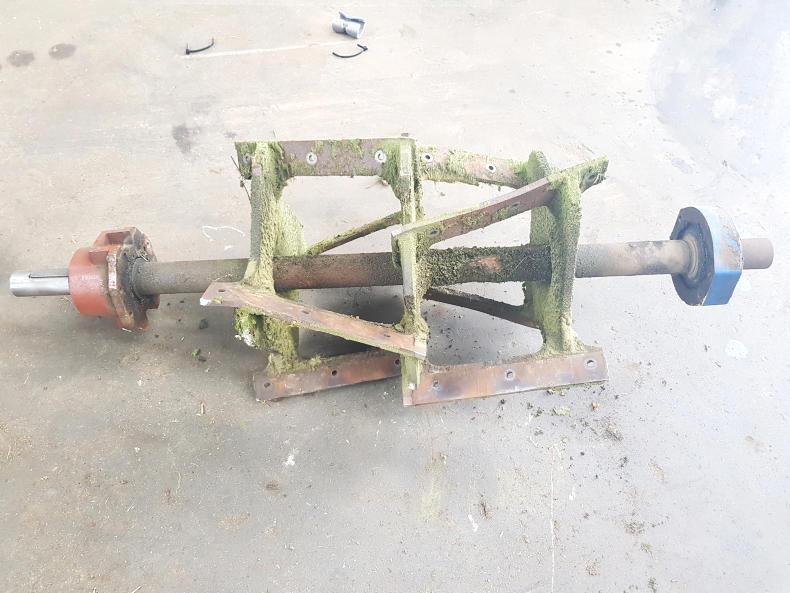
The blower controls the ability of the harvester to push grass up the shoot so must be well maintained.
4 Blower
The blower is another vital part of the forage harvester. Mark informed us that the condition of the paddles should be inspected and these should be replaced if necessary. If blow paddles are sufficiently worn, it will affect the capability of the machine to blow the grass up the chute and into the trailer.
The wear plates around the blower should also be examined and, if worn past their sell-by date, they must be replaced. The bearings around the blower are greased by the auto greaser so the operator should check that they are being supplied with grease on a regular basis. Similar to the feed rollers, the blower is constantly under significant pressure to blow large volumes of grass through the machine so it must be very well maintained.

Chute liners are the main wearing part to watch out for. The slew ring should be greased on a regular basis.
5 The chute
The chute is one of the simpler areas of the harvester yet must be maintained to high standard to ensure continued high output. The main thing to watch out for are the chute liners. It’s important these liners are replaced if they are gone too thin as otherwise the high pressure flow of grass may wear a hole in the chute. Manual grease points should be adhered to where the chute rotates on the “slew ring”.
6 General look around
With a general walk around the machine operators may recognise an issue or a problem, even something simple such as an auto greaser pipe disconnected. Operators must keep a close eye on the auto greaser to ensure it is working and not blocked. It is important to keep it filled with grease as required. The condition of the fan belt should be inspected and filters may need to be changed if gone over their lifespan.
Replacing the engine oil may not be exactly necessary, but it is certainly no harm, especially after the hard few weeks these forage harvesters have just endured.
Self-propelled machines cutting large amounts of grass should have transmission filters, diesel filters and oil filters replaced mid-season. Engine, transmission and gearbox oil levels should be checked on a regular basis. In addition, coolant levels should also be inspected regularly.
The main belt drive tension should be examined and adjusted if necessary. All wear plates should be inspected the whole way around the machine and replaced if they are worn.
A thorough mid-season check-up on these forage harvesters is critical. Simple mid-season check-ups such as outlined above will play a huge role in determining the life span of the machine.
Air filters and radiators must be blown out on a daily basis, especially with the current weather conditions and the dusty nature of the grass and surrounding environment. A poorly maintained self-propelled silage harvester with blunt knives and inadequately tuned will lead to an increased fuel consumption and result in the machine having to work harder to get through the same workload.
It is evident that Mark Kehoe knows Claas forage harvesters inside out. Mark is part of a team that services from up to 80 forage harvesters per year. He outlined the six main areas of the machine that should be assessed for a mid-season check-up.
For this article, we used a 2007 Claas Jaguar 870, as this would be typical of a large farmer or a contractor’s machine.

Pick-up reel: maintenance is vital to ensure grass is cleanly picked off the ground and there is a smooth flow of grass into the feed roller.
1 Pick-up
As the pickup reel is the decider on how well the machine will clean the ground, accompanied by the fact we are seeking an optimum crop flow into the feed rollers, it is vital to have it in tip-top condition. After the past few weeks, many contractors have spoken of the rougher-than-normal ground conditions which are as a result of the wet weather of the spring gone by.
As a result, blades on mowers and in particular tines on the pickup reel will have suffered most. Contractors should replace any broken, damaged or absent tines and tighten up the remaining tines. Any missing tines will add unnecessary stress on neighbouring tines, causing further breakages. Any missing or damaged tine bands should also be replaced.
Mark informed us that the chain on the pickup should be inspected and tightened if necessary. Any grease points not connected to the auto greaser should receive attention. The cam track on the drive side of the pickup reel should be inspected for any wear. The cam bearing should be changed at least once per season. The bearings on the support wheels on the pickup reel should be inspected by giving them a simple wiggle. If any play in these bearings is noted, they should be replaced.

Knives and shear bar: must be kept sharp to ensure smooth operation of machine and minimise fuel usage.
2 Knives and shear bar
To ensure the harvester is running and chopping smoothly, it is essential that the knives and shear bar are in good condition.
“Some busy machines around the country are after chopping 1,000 to 1,500 acres of first-cut silage and may need knives to be repositioned and quite possibly sharpened, especially if they have come into contact with stones, etc,” Mark said.
The sharpener stone should be inspected and replaced if worn. If this stone is excessively worn, it will not come into sufficient contact with the knives to sharpen them.
To ensure a smooth flow of grass through the machine, it is essential that knives are kept sharp. The gap between the knives and the shear bar should be minimised to provide a consistently smooth crop flow and chop length.
Blunt knives will bash the grass rather than chop it which leads to the machine working harder and an increased fuel usage as a result.
The chopper box area of the harvester will have received the most wear and tear from the day-to-day operations so it is vital to inspect and replace any worn parts as required.
3 Feed roller
The feed rollers are in the space between the pickup reel and the chopper box. They are exposed to serious pressures in order to compress high volumes of grass through a small area so they must be maintained to a high standard. The clutch in the feed roller should be checked to ensure its functionality. Mark advised that if the clutch is not up to standard it should be replaced to prevent damage if the machine comes into contact with a foreign object.

The feed roller is under continuous high pressure to keep the flow of grass moving so must be maintained to a high standard.
The feed roller housing should be looked over to make sure it is in good condition. Wear plates in this area should be inspected and replaced if deemed to have gone beyond their life span as they may impair crop flow.
The springs in this area must be inspected and correct tensions must be set. Bearings around the feed roller area should be inspected and a supply of grease is essential.

The blower controls the ability of the harvester to push grass up the shoot so must be well maintained.
4 Blower
The blower is another vital part of the forage harvester. Mark informed us that the condition of the paddles should be inspected and these should be replaced if necessary. If blow paddles are sufficiently worn, it will affect the capability of the machine to blow the grass up the chute and into the trailer.
The wear plates around the blower should also be examined and, if worn past their sell-by date, they must be replaced. The bearings around the blower are greased by the auto greaser so the operator should check that they are being supplied with grease on a regular basis. Similar to the feed rollers, the blower is constantly under significant pressure to blow large volumes of grass through the machine so it must be very well maintained.

Chute liners are the main wearing part to watch out for. The slew ring should be greased on a regular basis.
5 The chute
The chute is one of the simpler areas of the harvester yet must be maintained to high standard to ensure continued high output. The main thing to watch out for are the chute liners. It’s important these liners are replaced if they are gone too thin as otherwise the high pressure flow of grass may wear a hole in the chute. Manual grease points should be adhered to where the chute rotates on the “slew ring”.
6 General look around
With a general walk around the machine operators may recognise an issue or a problem, even something simple such as an auto greaser pipe disconnected. Operators must keep a close eye on the auto greaser to ensure it is working and not blocked. It is important to keep it filled with grease as required. The condition of the fan belt should be inspected and filters may need to be changed if gone over their lifespan.
Replacing the engine oil may not be exactly necessary, but it is certainly no harm, especially after the hard few weeks these forage harvesters have just endured.
Self-propelled machines cutting large amounts of grass should have transmission filters, diesel filters and oil filters replaced mid-season. Engine, transmission and gearbox oil levels should be checked on a regular basis. In addition, coolant levels should also be inspected regularly.
The main belt drive tension should be examined and adjusted if necessary. All wear plates should be inspected the whole way around the machine and replaced if they are worn.
A thorough mid-season check-up on these forage harvesters is critical. Simple mid-season check-ups such as outlined above will play a huge role in determining the life span of the machine.
Air filters and radiators must be blown out on a daily basis, especially with the current weather conditions and the dusty nature of the grass and surrounding environment. A poorly maintained self-propelled silage harvester with blunt knives and inadequately tuned will lead to an increased fuel consumption and result in the machine having to work harder to get through the same workload.






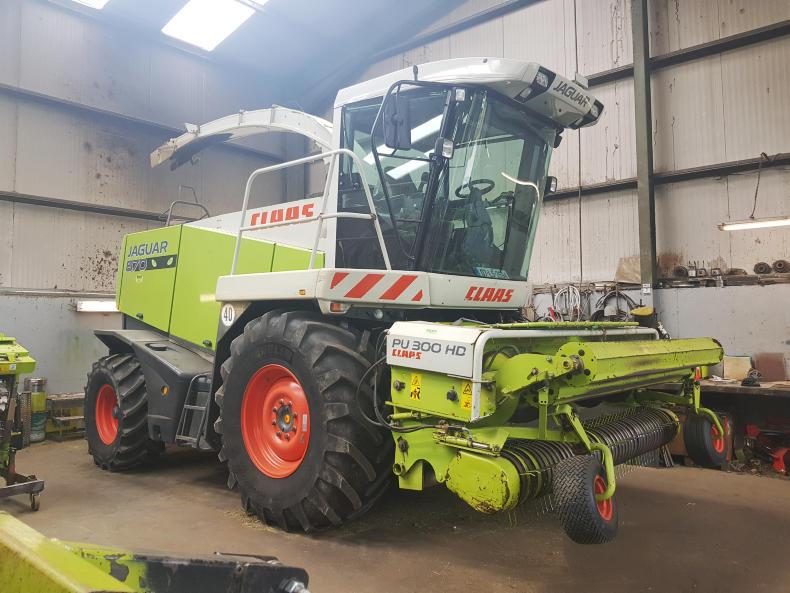




 This is a subscriber-only article
This is a subscriber-only article











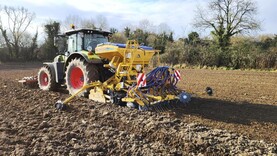
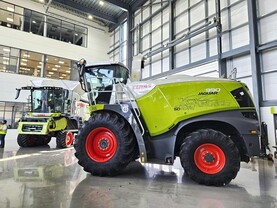


SHARING OPTIONS: